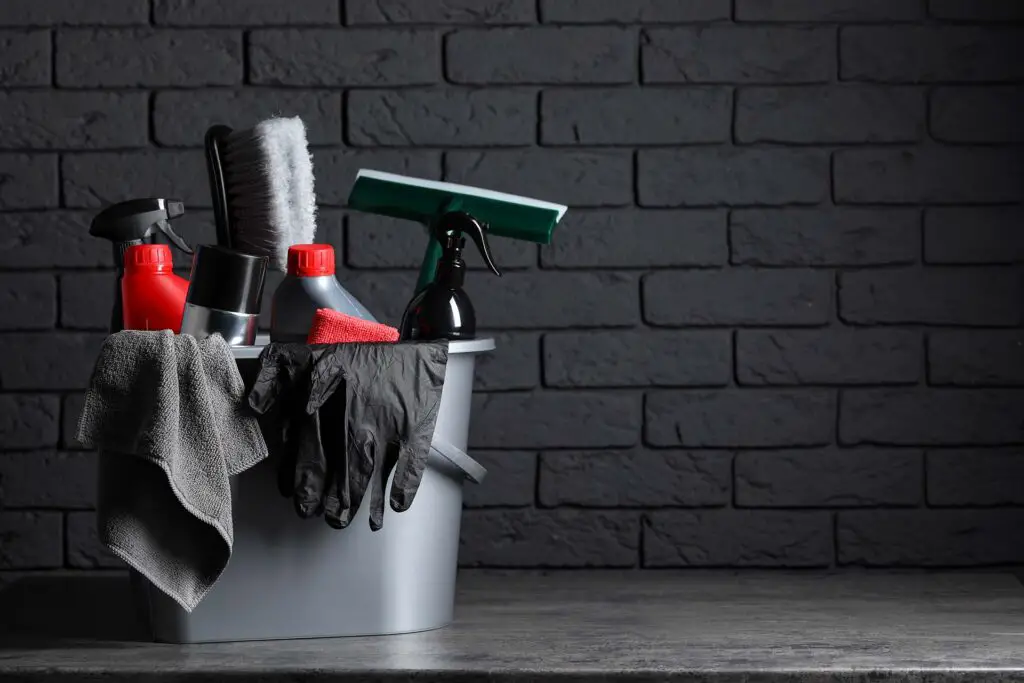Knowing how to give your engine a deep clean and get rid of that pesky carbon buildup is something all car lovers dread, but with the right approach, it can be taken care of in no time. So, if you need some advice on how to remove carbon buildup, then dive into this blog post – I’ll take a look at the different methods available and help you decide which one is best for your engine.
The best way to remove carbon buildup depends on the buildup’s severity and the engine type you have. Some effective methods include using specialized cleaning products, manually scraping the buildup, and using walnut blasting. It’s best to consult a professional mechanic for the appropriate method for your specific situation.
What Is a Carbon Buildup?
Carbon buildup refers to the accumulation of carbon deposits in the combustion chamber, intake manifold, or on the valves and spark plugs of an engine. This buildup can occur over time as a result of incomplete combustion, low-quality fuel, or poor engine maintenance.
Why Is It Important to Remove It?
It’s important to remove carbon buildup because it can cause a variety of issues with your engine. It can lead to decreased engine performance, including reduced power and fuel efficiency, as well as increased emissions. In severe cases, it can cause damage to the engine, such as cracked or bent valves, which can be expensive to repair. By removing it, you can extend the life of your engine and prevent costly repairs down the line.

Step-by-Step Guide on How to Remove Carbon Buildup
This is a common issue that can affect the performance of your engine, leading to decreased power and fuel efficiency. If left untreated, it can even cause damage to the engine. However, removing it from the engine is a simple process that can be done at home with the right tools and materials.
Gather the Necessary Tools and Materials
The first step is to gather the necessary tools and materials. Here’s what you’ll need:
- Carbon cleaning solution – There are various types of carbon cleaning solutions available, so make sure to choose one that is appropriate for your engine. Read the instructions carefully before purchasing to ensure that it’s safe to use on your specific engine. I personally use Shooter’s Choice cleaning solution.
- Wire brush or soft cloth – A wire brush or soft cloth is needed to scrub off the remaining carbon buildup from the affected parts. OriGlam brushes will do the job.
- Container for cleaning solution – You’ll need a container to hold the cleaning solution while the affected parts soak. If you don’t have it at home, get the ITYLIFE CITYLIFE 6-pack deal and reuse them for everyday needs.
- Gloves – Wearing gloves will protect your hands from the cleaning solution and carbon buildup. I have the Armor Guys ones.
- Safety glasses – It’s always a good idea to wear safety glasses to protect your eyes from any debris that may come loose during the cleaning process. I find MEIGIX glasses the best option on the market.
Remove the Affected Components From the Engine
The next step is to remove the affected components. The components that need to be removed will depend on where the carbon buildup is located. Common components that may need to be removed include the intake manifold, valves, or spark plugs. Here are some general steps to follow when removing these components:
- Consult the vehicle owner’s manual – Refer to the owner’s manual to determine which components must be removed and how to remove them safely.
- Disconnect the battery – It’s important to disconnect the battery before removing any components to avoid any electrical hazards.
- Remove the affected components – Using the appropriate tools, carefully remove the affected components from the engine. Be sure to keep track of any bolts or screws that may be removed.
- Place the components in a safe location – Once the components are removed, place them in a safe location where they won’t be damaged or misplaced.
By removing the affected components, you’ll be able to access the affected areas and properly clean them. Make sure to keep track of all the components and their respective hardware to make reinstallation easier.

Use a Carbon Cleaning Solution to Dissolve Carbon Buildup
After removing the affected components from the engine, the next step is to use a carbon-cleaning solution. Here’s how to do it:
- Pour the cleaning solution into a container – Use a container that is large enough to hold the affected components and fill it with the recommended amount of cleaning solution.
- Soak the components – Place the removed components into the container with the cleaning solution and let them soak for the recommended time. The solution will dissolve the carbon buildup, making it easier to remove.
- Follow the instructions – Be sure to follow the instructions provided by the cleaning solution manufacturer carefully. Some solutions may require different soak times or methods of application.
- Use a brush or cloth to scrub the components – After the components have soaked in the cleaning solution, use a wire brush or a soft cloth to scrub. Be gentle when scrubbing to avoid damaging the components.
- Rinse the components – Once the carbon buildup has been removed, rinse the components with clean water to remove any remaining cleaning solution. Dry the components thoroughly before reinstalling them.
There are several carbon cleaning solutions available on the market. Choose a product that is appropriate for your engine and follow the manufacturer’s instructions for use.
Apply the Cleaning Solution to the Affected Parts
To apply the carbon cleaning solution to the affected parts, follow these steps:
- Using a clean cloth or brush, apply the cleaning solution to the affected parts of the engine. This can include the intake manifold, valves, or spark plugs.
- Be sure to apply the solution evenly and thoroughly.
- Depending on the type of cleaning solution used, you may need to let it sit for a certain amount of time before moving on to the next step.
Applying the cleaning solution directly to the affected parts of the engine will help dissolve the carbon buildup, making it easier to remove. Be sure to wear gloves and safety glasses while applying the solution to protect your skin and eyes from irritation. Follow the manufacturer’s instructions for the cleaning solution to ensure that it is applied correctly and safely.

Use a Wire Brush or a Soft Cloth to Scrub off the Remaining Carbon Buildup
After the parts have soaked, use a wire brush or a soft cloth to remove any remaining dirt. Be careful not to use too much pressure, as this could damage the parts. If necessary, apply more cleaning solution and continue scrubbing until all of the dirt is removed.
Rinse the Parts With Water and Dry Them Thoroughly
Once the dirt has been removed, the next step is to rinse the parts with water and dry them thoroughly. Use a hose or container of clean water to rinse the affected parts thoroughly. Ensure all the cleaning solution and any remaining debris have been washed away.
It’s important to avoid using compressed air to dry the parts, as this can cause debris or moisture to be blown back into the engine. Once the parts are dry, place them in a safe location where they won’t be damaged or misplaced.
Reinstall the Parts and Test the Engine Performance
By reinstalling the affected components and testing the engine performance, you can ensure that the carbon buildup has been successfully removed and that the engine is running smoothly and efficiently. It’s important to regularly maintain your engine. Regular oil changes and using high-quality fuel and oil can help keep your engine clean and running smoothly.

Tips for Preventing Carbon Buildup
Maintaining the health and performance of your engine is a must. Luckily, there are some tips to help prevent carbon buildup. Let’s check them out.
Use High-Quality Fuel and Oil
Using high-quality fuel and oil will help keep your engine clean. Cheap fuel and oil often contain contaminants that can leave behind carbon deposits in your machine. I have a diesel and always use Shell Rotella synthetic oil – it’s definitely the best oil for a diesel engine.
Change the Oil and Oil Filter Regularly
Regular oil changes help keep your engine clean by removing dirt and contaminants that can cause dirt gathering. It’s important to follow your vehicle manufacturer’s recommended oil change schedule.
Drive the Car at High Speeds Occasionally
Taking your car for a high-speed drive occasionally can help burn off carbon deposits in the engine. This is because high-speed driving produces higher temperatures, which can help break down and remove dirt.
Avoid Idling the Engine for Extended Periods
When you idle your engine for an extended period, it can lead to carbon buildup. Instead, turn off your engine when you’re not driving or in traffic for an extended period.
Use an Engine Cleaner Additive in the Fuel Tank Periodically
Engine cleaner additives can help break down and remove carbon buildup in your engine. It’s important to use a cleaner specifically designed for your type of engine and follow the manufacturer’s instructions for use.
Check How to Remove Carbon Buildup on Other Parts of Your Four-Wheeler
This common problem can occur in various parts of your four-wheeler, such as the engine, exhaust, and fuel system. If left unchecked, carbon buildup can lead to a decrease in performance and fuel efficiency and can even cause damage to your vehicle. Let’s check how to get rid of it from other parts of your four-wheeler.
How to Remove Carbon Buildup in Intake Manifold
Remove the manifold, use a carbon cleaning solution, scrub the manifold with a wire brush or soft cloth, rinse the manifold with water, dry it thoroughly, and reinstall it.
How to Remove Carbon Buildup in Engines
Remove the affected components, use a carbon cleaning solution, scrub off the remaining dirt, rinse the parts with water, dry them thoroughly, and reinstall them.
How to Remove Carbon Buildup on Cast Iron Skillets
Use a mixture of salt and oil to scrub the skillet with a paper towel, rinse it with water, dry it with a towel, and season it with oil.
How to Remove Carbon Buildup on Valves
Remove the valves, use a carbon cleaning solution, scrub the valves with a wire brush or soft cloth, rinse the valves with water, dry them thoroughly, and reinstall them.
When You Know How to Remove Carbon Buildup Your Car Will Run Smoothly
To summarize, it is clear that success in removing carbon buildup from your vehicle requires patience as well as a specific set of skills. Thankfully, with the help of instructional guides and tutorials, everyone can acquire these skills and restore their car engine to peak performance. Removing it from your engine can be a tedious task. However, the reward comes in the form of improved fuel efficiency, smoother rides, and an extended lifespan for your car – not to mention peace of mind!








